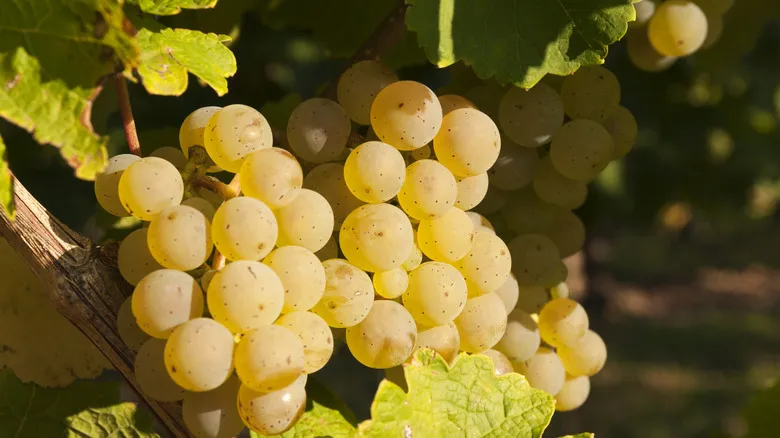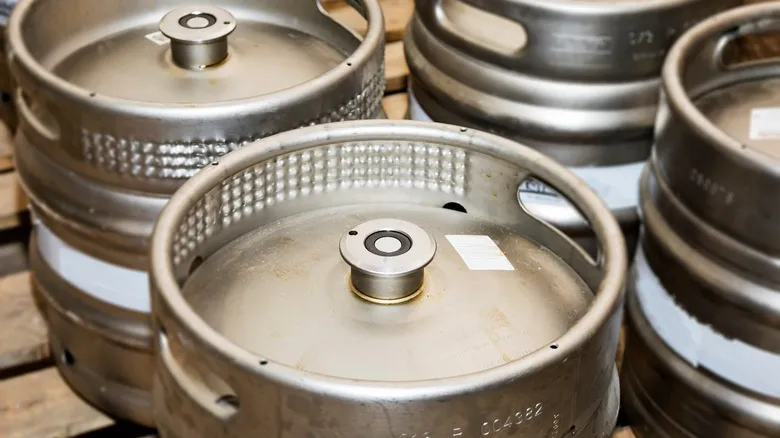The specifics of Riesling

Riesling, a wine made from grapes of the same name, originates in Germany but is also produced globally, including regions like Canada, Australia, Oregon, New York, and even Slovakia. Like all wines, its flavor is influenced by the geographic area, soil composition, and climate—collectively referred to as terroir by wine enthusiasts. This is especially true for Riesling. When cultivated in sandy, well-drained soils rich in limestone and granite, Riesling tends to be quite acidic and often exhibits a savory quality known as minerality, akin to umami in culinary terms.
While the terroir significantly impacts Riesling's flavor, sweeter varieties typically showcase fruity notes such as apricot, peach, and citrus fruits like lemon or lime. In contrast, some drier versions may reveal subtle spice hints, including ginger. Uncommonly, certain aged bottles can emit a gasoline-like aroma, a trait that dedicated Riesling lovers seem to enjoy. With a wide range of varieties, most of which achieve a delicate balance between sweetness and acidity, Riesling pairs exceptionally well with food, complementing dishes from rich duck confit and garlic honey salmon to refreshing summer fruit tarts.
The specifics of Gewürztraminer

Besides being challenging to pronounce, Gewürztraminer is also less commonly available compared to the almost universally found Riesling. However, it is reasonably priced, typically ranging from about $8 to $30 per bottle. Gewürztraminer grapes are a variant of the Savagnin grape, also known as Traminer, which is cultivated in northeastern Italy. The term "Gewürz" translates to "spice," and Gewürztraminer grapes are a spicier, pinkish-red version of their green Savagnin counterparts.
Primarily produced in the Alsace region of France and Trentino-Alto Adige in Italy, Gewürztraminer is an aromatic wine that features notes of tropical and stone fruits like lychee and tangerine, along with spices reminiscent of pumpkin pie, such as ginger, bergamot, and orange blossom, as well as floral elements, particularly rose petals. These bold flavors and aromas make Gewürztraminer an excellent choice for pairing with more complex, spicy dishes, including earthy Mexican chicken mole, Indian lamb vindaloo, and Sichuan cuisine.
Highlighting the differences between Riesling and Gewürztraminer

Although Riesling and Gewürztraminer may appear quite alike when you glance at the bottles in your local wine shop, the nuances become clear when you delve into their aromas and flavors. Gewürztraminer tends to showcase a more tropical profile, featuring both fruity and spicy notes, whereas Riesling offers a diverse range of flavors that are significantly shaped by its growing region.
Gewürztraminer, while somewhat harder to find, can be seen as a more approachable wine, with its fruit-forward flavors and higher sugar content resulting in a sweeter taste. In contrast, the acidity found in drier Rieslings can create a lively, almost effervescent sensation on the palate, even if they are not sparkling wines. Pairing Riesling with food is generally easy, as it complements nearly any dish you can think of. Conversely, Gewürztraminer pairs exceptionally well with cuisines that incorporate chili peppers, cinnamon, lemongrass, and sweet coconut milk.
One of the best ways to explore the distinctions (and similarities) between Riesling and Gewürztraminer is to host a tasting party. Invite half of your guests to bring bottles of Riesling and the other half to bring Gewürztraminer, and let the discussions unfold!
Recommended

How Many Beers Are In A Standard Keg?

How Many Bottles Of Wine Are In A Case And Why It's Worth It To Buy One

German Vs American Beer: What Makes Them Different?

What Makes Spumante Wine Different From Champagne?
Next up

